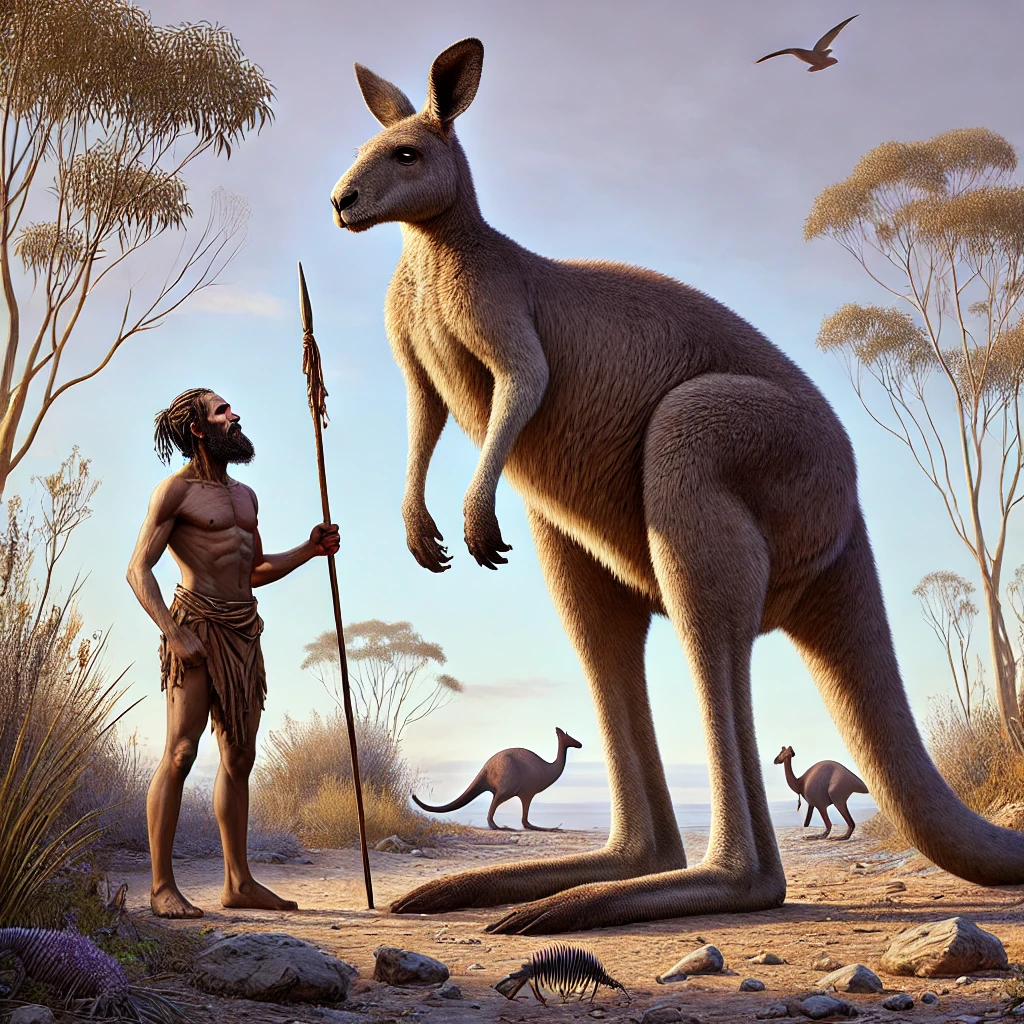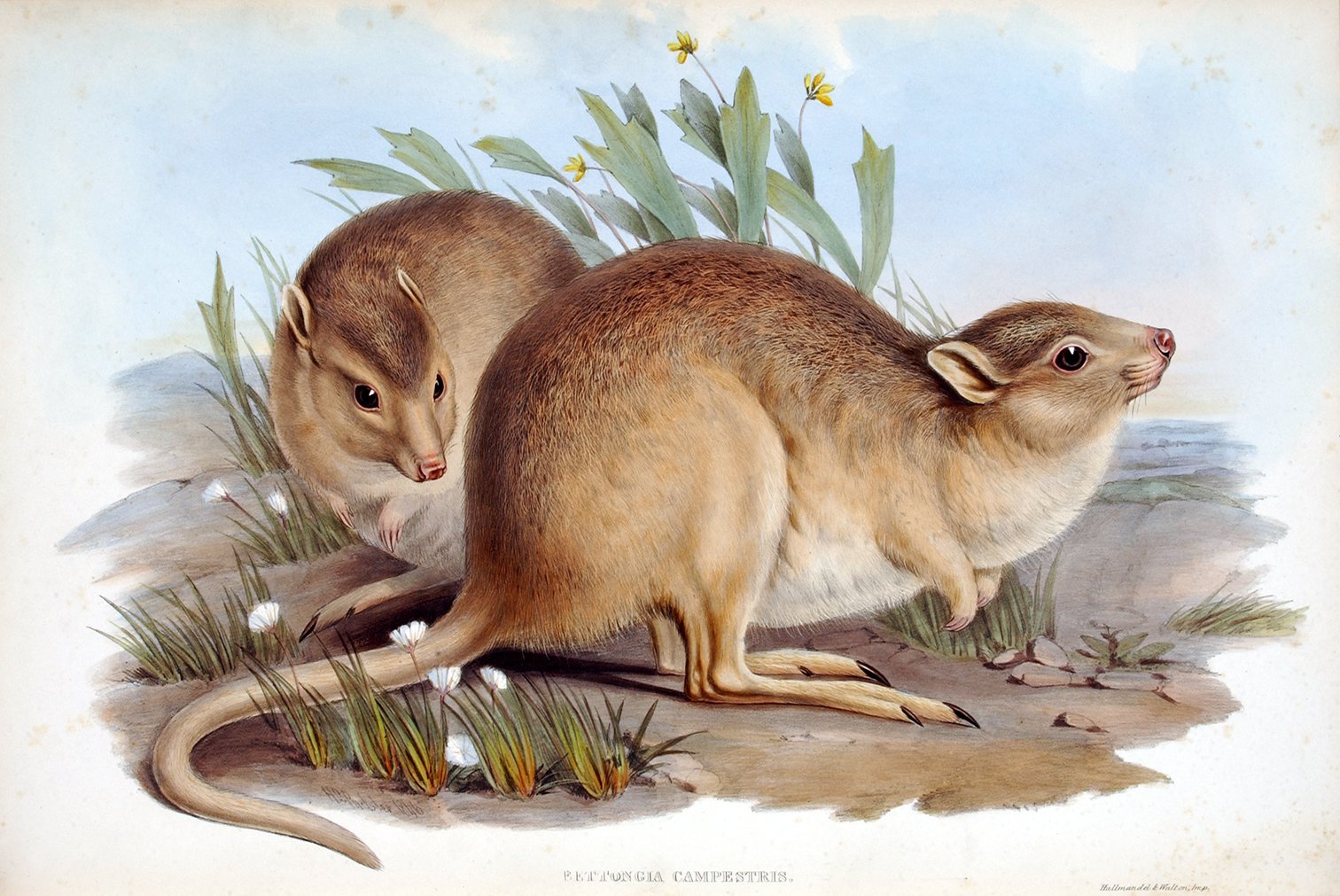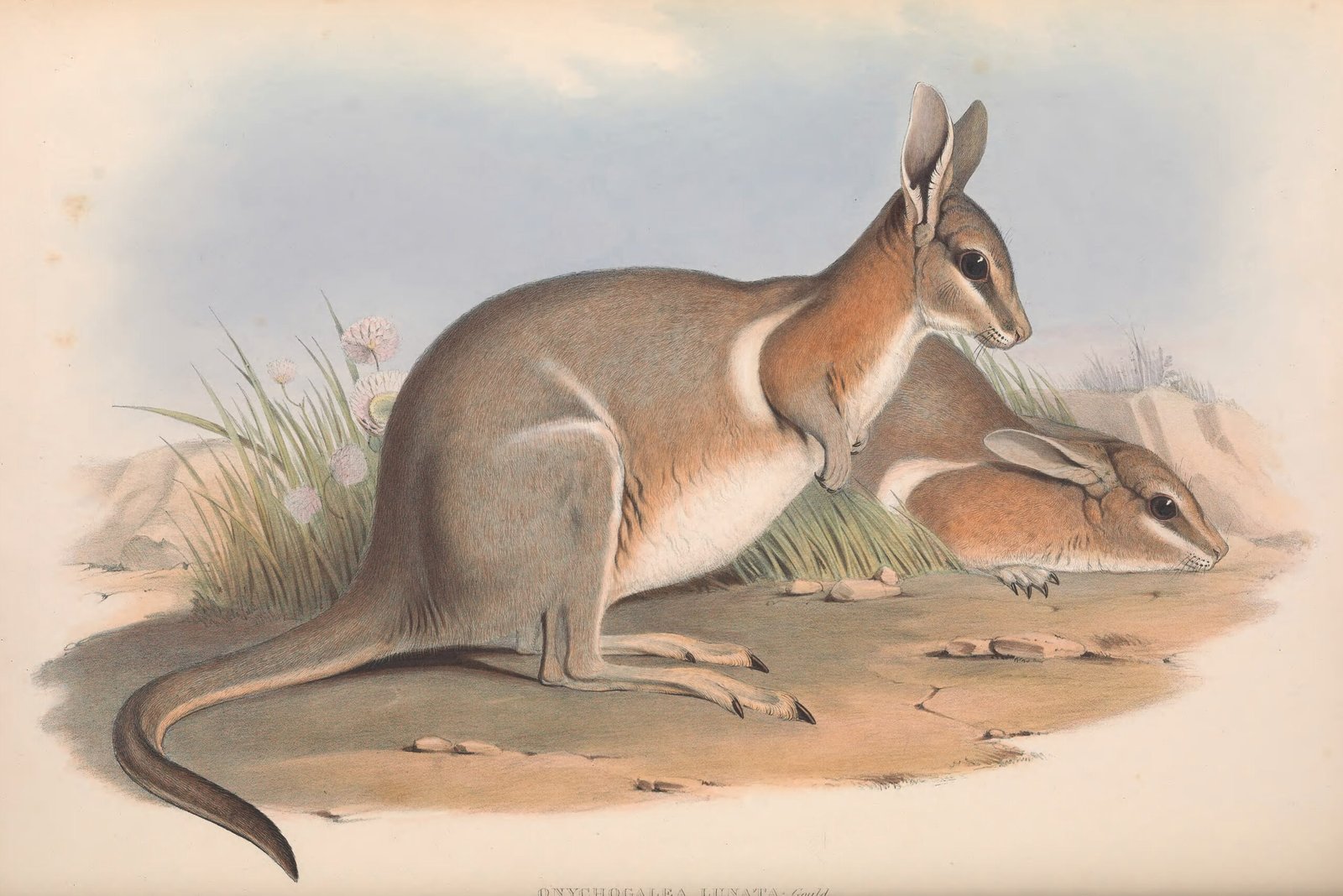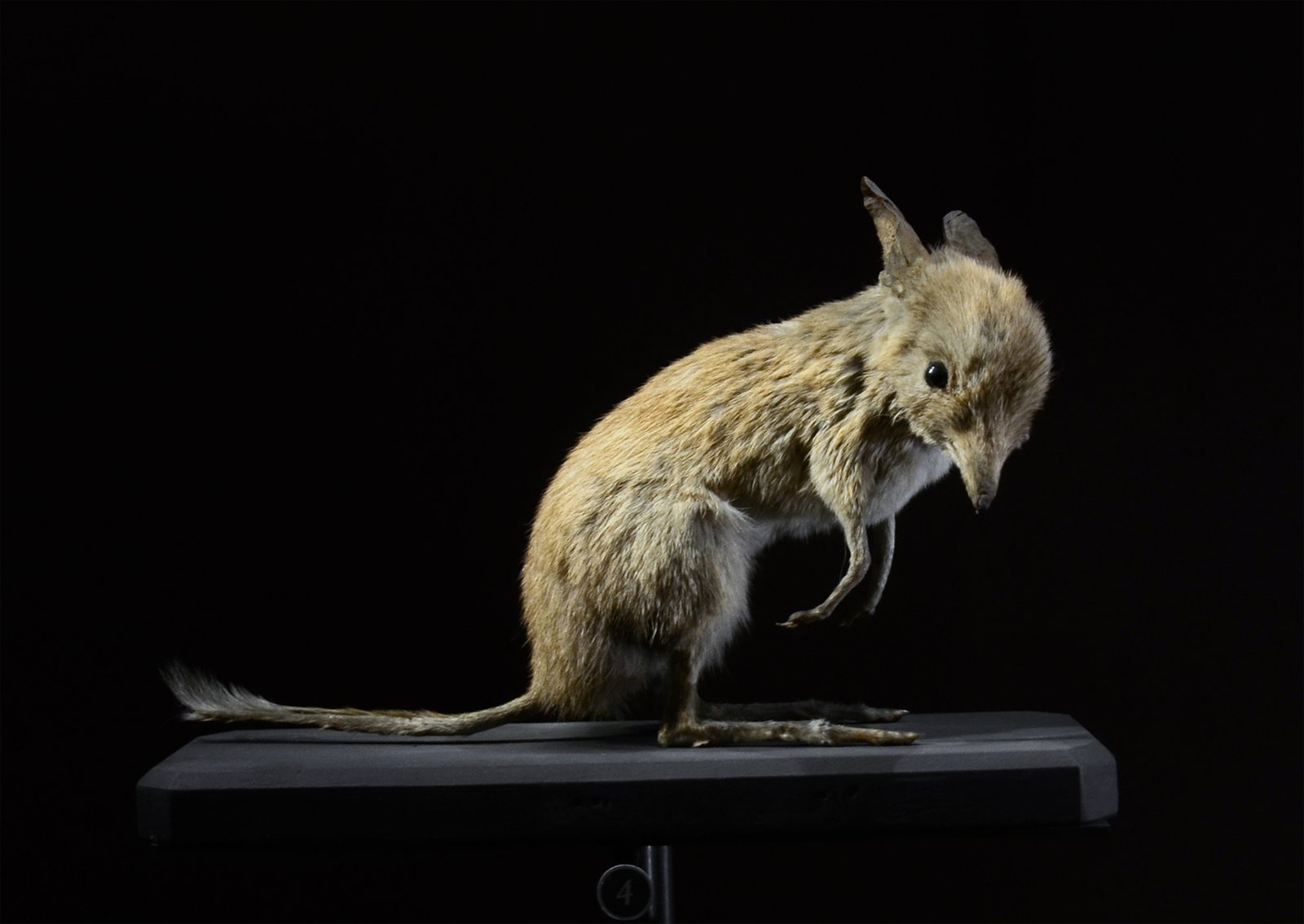Unraveling the Giant Short-Faced Kangaroo: Australia’s Ancient Giant
Introduction:
The Giant Short-Faced Kangaroo, scientifically known as Procoptodon goliah, was the largest and most robust kangaroo that ever existed. This colossal marsupial roamed the Pleistocene landscapes of Australia, characterized by its short face, forward-facing eyes, and massive body. Despite its formidable size, the Giant Short-Faced Kangaroo went extinct approximately 15,000 years ago, likely due to climate change and human hunting. Its legacy provides critical insights into Australia’s prehistoric fauna and the challenges faced by megafauna during environmental shifts.

Facts:
| Attribute | Details |
|---|---|
| Scientific Name | Procoptodon goliah |
| Common Names | Giant Short-Faced Kangaroo |
| Extinction Timeline | Approximately 15,000 years ago |
| Kingdom | Animalia |
| Phylum | Chordata |
| Class | Mammalia |
| Order | Diprotodontia |
| Family | Macropodidae |
| Genus | Procoptodon |
| Species | P. goliah |
| Natural History and Origin | Native to the arid and semi-arid regions of Australia |
| Physical Information | Standing height up to 2 meters, weight up to 230 kg |
| Appearance | Short face, forward-facing eyes, robust build, long powerful legs |
| Scientist Names | Described by paleontologists studying fossil remains |
| Region | Australia, particularly in the inland and semi-arid regions |
Appearance:
The Giant Short-Faced Kangaroo was a massive marsupial, standing up to 2 meters (6.6 feet) tall and weighing up to 230 kilograms (510 pounds). It had a short, flat face with forward-facing eyes, providing a good field of vision. Its body was robust, with long, powerful legs adapted for hopping and a short tail for balance. Unlike modern kangaroos, it had a more upright posture, allowing it to browse on higher vegetation.
Distribution:
Historically, the Giant Short-Faced Kangaroo inhabited the arid and semi-arid regions of Australia. Fossil evidence suggests it roamed widely across the continent, thriving in diverse environments from woodlands to open plains.
Habits and Lifestyle:
The Giant Short-Faced Kangaroo was primarily a browser, feeding on leaves, shrubs, and possibly fruits. Its large size and upright posture allowed it to reach higher vegetation that smaller herbivores could not access. This kangaroo was likely a solitary animal, although it may have come together with others during the breeding season or in areas with abundant food.
Physical Characteristics:
The Giant Short-Faced Kangaroo had several distinctive physical features. Its short, broad face and forward-facing eyes provided excellent depth perception, useful for navigating its environment and selecting food. The powerful hind legs were adapted for efficient hopping, while the strong arms and large hands were likely used for grasping branches and pulling down foliage. Its teeth were suited for grinding tough plant material, indicating a diet of fibrous vegetation.
Diet and Nutrition:
As a herbivore, the Giant Short-Faced Kangaroo primarily fed on a variety of plant materials, including leaves, shrubs, and fruits. Its diet was well-suited to the arid environment, where it could browse on higher vegetation and access food that was out of reach for other herbivores. The kangaroo’s digestive system was adapted to break down tough plant fibers, allowing it to extract maximum nutrition from its diet.
Behavior:
Giant Short-Faced Kangaroos exhibited solitary behavior, with individuals maintaining their own territories. They communicated through vocalizations and body language, especially during the breeding season. Their nocturnal and crepuscular activity patterns helped them avoid the extreme daytime heat of the Australian outback. The kangaroo’s powerful legs allowed it to cover large distances in search of food and water, essential for survival in the harsh, arid landscape.
Cause of Extinction:
The extinction of the Giant Short-Faced Kangaroo around 15,000 years ago was likely due to a combination of climate change and human activity. The end of the Pleistocene brought significant environmental changes, including shifts in vegetation and water availability. Additionally, early human populations in Australia may have hunted these large kangaroos, further contributing to their decline. The combination of these factors ultimately led to the extinction of this impressive megafauna species.
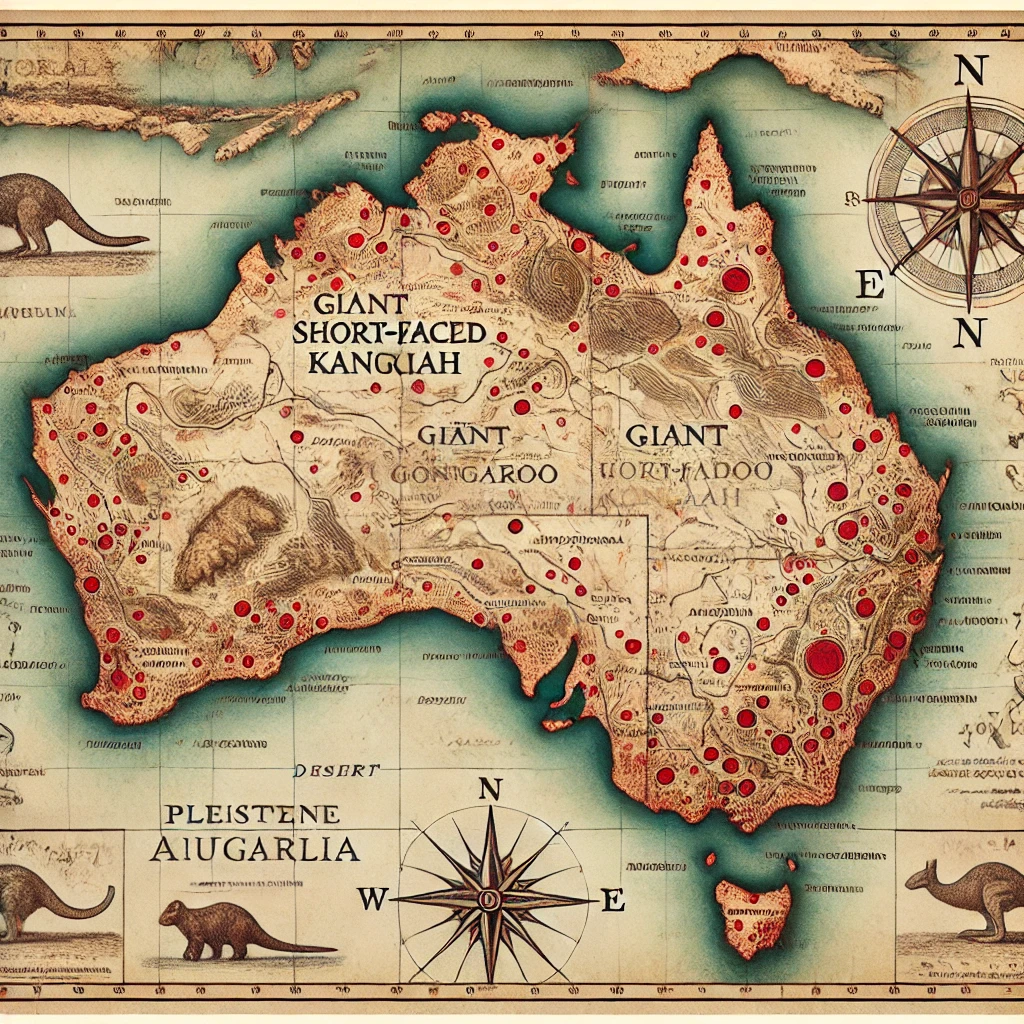
FAQs:
| Question | Answer |
|---|---|
| What led to the extinction of the Giant Short-Faced Kangaroo? | Climate change and human hunting. |
| When did the Giant Short-Faced Kangaroo go extinct? | Approximately 15,000 years ago. |
| What did the Giant Short-Faced Kangaroo eat? | It fed on leaves, shrubs, and possibly fruits. |
| Why is the Giant Short-Faced Kangaroo significant? | It provides critical insights into Australia’s prehistoric fauna and the challenges faced by megafauna during environmental shifts. |
| Are there efforts to study the Giant Short-Faced Kangaroo? | Ongoing paleontological research aims to uncover more information about its life and extinction. |
Categories:
- Extinct Mammals
- Australian Wildlife
- Paleontological Research
- Pleistocene Ecosystems

These details should provide a comprehensive overview of the Giant Short-Faced Kangaroo, ideal for educational and conservation-focused content on your website.
-
Sea Mink: The Lost Predator of the North Atlantic

Rediscovering the Sea Mink: An Extinct Coastal Hunter Introduction: The Sea Mink, scientifically known as Neogale macrodon, was a large,…
-
Moa: The Extinct Giants of New Zealand
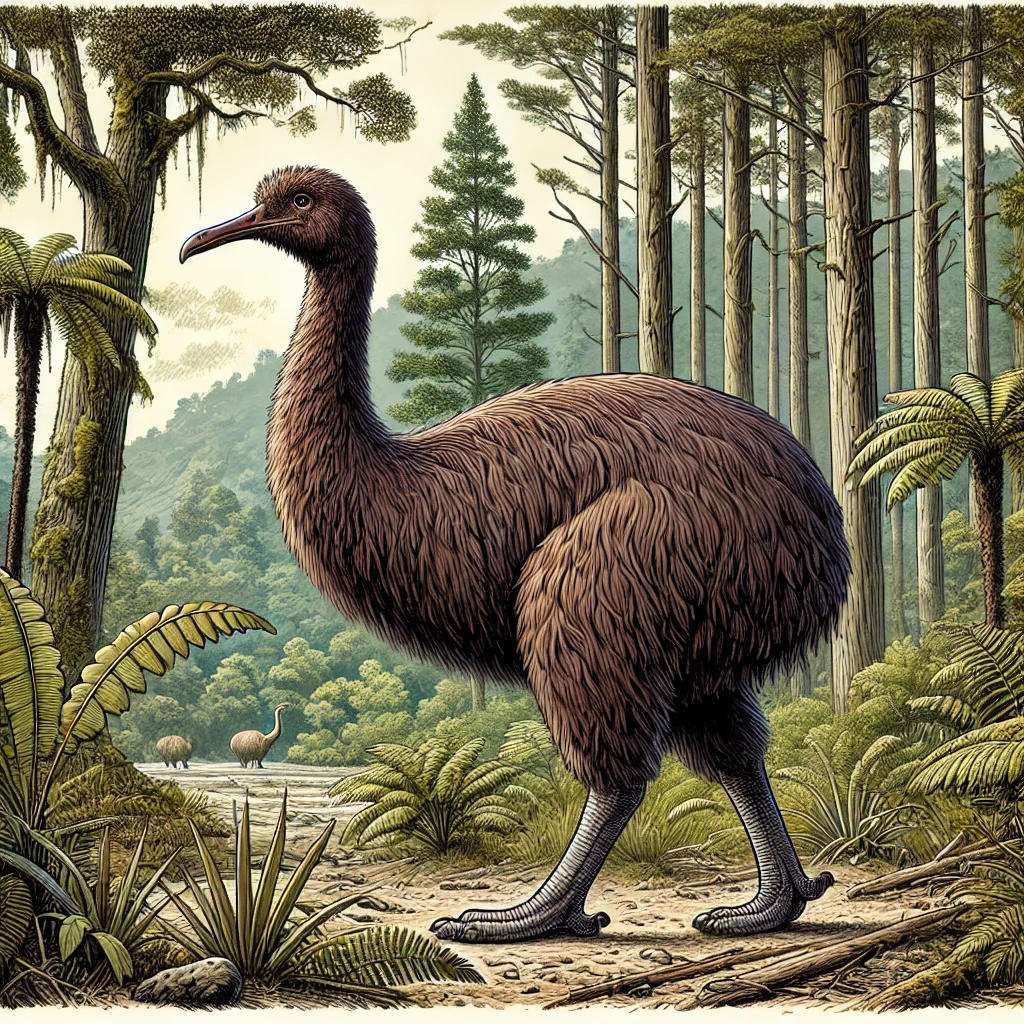
Exploring the Moa: New Zealand’s Lost Giants Introduction: The Moa, belonging to the order Dinornithiformes, were a diverse group of…
-
Dodo: The Iconic Symbol of Extinction

Unraveling the Dodo: The Lost Bird of Mauritius Introduction: The Dodo, scientifically known as Raphus cucullatus, was a flightless bird…
Views: 17
